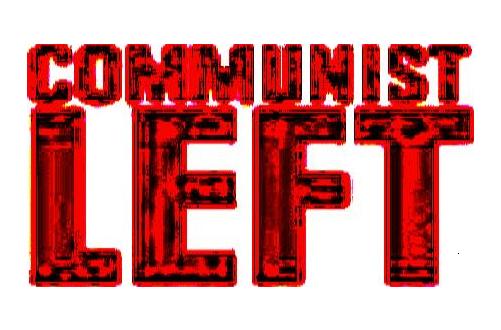ZENGCHENG, China (Reuters) - Riot police poured into a southern Chinese factory town crowded with migrant workers Monday, a day after militia fired tear gas to quell rioting over the abuse of a pregnant street hawker who became a symbol of simmering grassroots discontent.
Hong Kong television showed crowds of workers and stall holders, many from the rural southwestern province of Sichuan running through the streets of Zengcheng in Guangdong province over the weekend.
The rioters smashed windows, set fire to government buildings and overturned police vehicles, bringing to a climax anger over security guards who had set upon the hawker, Wang Lianmei, Friday. Footage showed riot police firing tear gas and deploying armoured vehicles to disperse the crowds, and handcuffing protesters.
By Monday evening the unrest had subsided. But hundreds of riot police guarded the streets, and continued arriving by the busload, while wary workers watched on street corners.
Though protests have become relatively common over anything from corruption to abuse of power, the ruling Communist Party is sensitive to any possible threat to its hold on power in the wake of the protests that have swept the Arab world.
Guangdong is also a pillar of China's export industries, and persistent unrest there could unnerve buyers and investors.
Witnesses said more than 1,000 protesters had besieged at least one government office in Zengcheng.
"People were running around like crazy," a shop owner in the area told the South China Morning Post. "I had to shut the shop by 7 p.m. and dared not come out."
News reports said the incident was sparked Friday night when security personnel in nearby Dadun village pushed pregnant hawker Wang, 20, to the ground while trying to clear her from the streets.
"The case was just an ordinary clash between street vendors and local public security people, but was used by a handful of people who wanted to cause trouble," Zengcheng Mayor Ye Niuping was quoted as saying by the China Daily newspaper.
Other clashes have erupted in southern China in recent weeks, including in Chaozhou, where hundreds of migrant workers demanding payment of their wages at a ceramics factory attacked government buildings and set vehicles ablaze.
Last week, protests erupted in central China at the death under interrogation of an official.
Over the weekend, state media said that two people were slightly injured in an explosion in Beijing's neighbouring city Tianjin, set off by a man bent on "revenge against society."
Despite pervasive censorship and government controls, word of protests, along with often dramatic pictures, spreads fast in China on mobile telephones and the Internet, especially on popular microblogging sites.
In 2007, China had over 80,000 "mass incidents," up from over 60,000 in 2006, according to the Chinese Academy of Social Sciences. Many involved no more than dozens protesting against local officials over complaints about corruption, abuse of power, pollution or poor wages.
No authoritative estimates of the number of protests, riots and mass petitions since then have been released.
Guangdong's Communist Party boss, Wang Yang, is one of the ambitious provincial leaders who may win a place in China's next central leadership, after President Hu Jintao and Premier Wen Jiabao retire from power from late next year.
In past months, Wang has sought to cast himself as a moderate leader willing to heed ordinary citizens' gripes, and has said his priority is improving the public sense of wellbeing -- a gentler message than the hardline one that domestic security officials have pushed.
"Use rule of law to protect and realise people's democratic rights," Wang told a meeting in April, according to the official Xinhua news agency. "People don't fear poverty; what they fear is not having the market conditions for fair competition so that they can achieve prosperity."
Also in April, the Communist Party committee of Guangdong heard a lecture from Sun Liping, a sociologist from Tsinghua University in Beijing who has bluntly warned that corruption, inequality and divisions threaten to "rupture" Chinese society.






댓글 목록
관리 메뉴
본문
청년창안대회 - 세상을 바꾸는 아이디어 공모전스티브 잡스가 바꾸지 못한 것,
청년들의 할 일이다.
포스터
http://chuntaeil.org/images/popupimages/pop_link.jpg
청년창안 대회란?
일터와 대학, 그리고 청년의 삶. 더 나은 곳, 더 나은 삶으로 바꿀 수 있는 좋은 생각이 없을까? 청년들 스스로 이를 해결하는 아이디어를 모아보자.
응모기간. 2011년 5월 20일(화) ~ 6월 19일(일)
응모할곳. y_idea@naver.com
응모자격. 만 15세부터 39세까지의 모든 청년들(개인 또는 2~5인으로 이뤄진 팀 참가 가능)
응모분야. 청년의 삶을 변화시킬 수 있는 모든 분야의 아이디어. 예)주거, 취업,등록금, 소셜 네트워크
창안료와 상금.
대상 1편. 100만원과 상패
최우수상 2편. 50만원과 상패
우수상 10편. 10만원과 상패
가작 10편. 도서 2권 증정(전태일 평전, 레알청춘)과 상패
응모방법
- 하나. 아이디어
- 둘. 실행계획 *한글 문서에 작성해서 보내주세요.
심사기준
- 완성도.
- 창의성
- 실현 가능성
심사 일정 및 발표
- 예심 발표. 6월 22일
- 본심 발표와 시상식. 7월 2일
예심 통과자는 10일 간의 대회 준비 시간을 드리고, 대회 당일인 7월 2일 프리젠테이션 발표를 통해 수상자를 결정합니다.
http://2009idea.makehope.org
전태일재단. 02-3672-4138
청년유니온. 02-735-0261